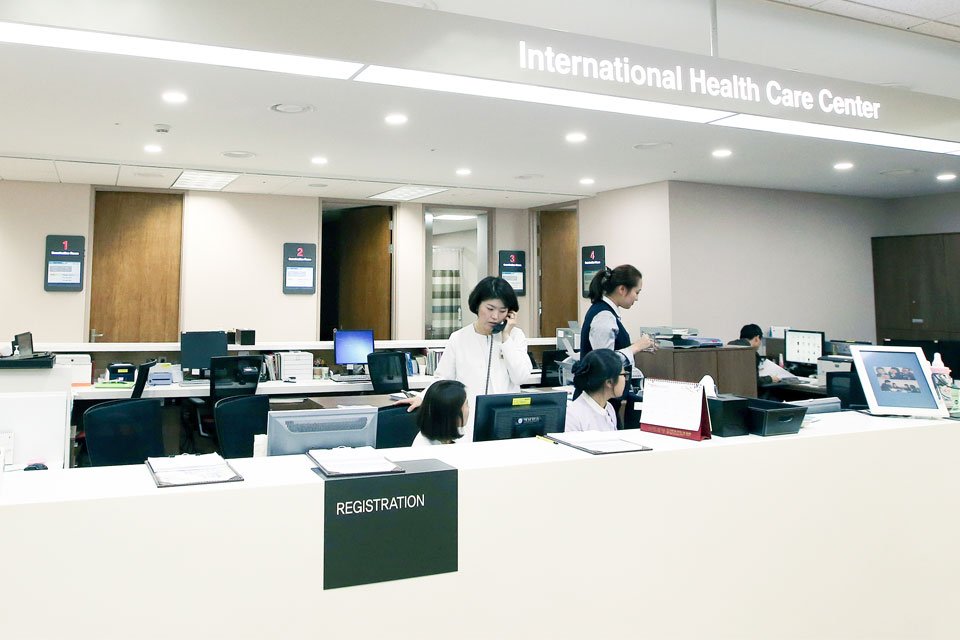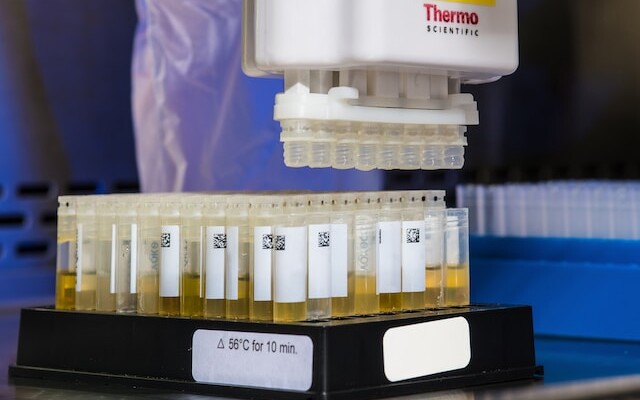So, it’s finally happening. You’ve got your contract in hand, your plane ticket purchased, and you’ve been practicing your polite bow in the mirror for weeks. You’re all set to leave familiarity behind and embrace life as a teacher in Korea.
Or almost, anyway. If I could give one piece of advice to new expats, it would be: learn some Korean before you get here. Not only will it impress your coworkers and win you a few points for cultural awareness, it will also make the transition between your old life and new infinitely easier.
The best way to begin learning Korean is to start with Korea’s written alphabet, known as Hangeul (한글). There are 14 consonants and 10 vowels, which can be used on their own or combined in a variety of ways to form digraphs. Memorize their shape and the sound that each letter or digraph makes. Learning to read Hangeul will make your Korean pronunciation much more accurate than if you simply try to sound out the romanized versions of Korean words. You can find helpful guides on how to begin learning Hangeul here and here. Information on the revised romanization of Hangeul can be found here.
That being said, this article is not meant to be a lesson on Hangeul, or really a proper foundation of any kind. This is all about survival Korean, those quick and dirty (in a grammatical sense) phrases that will help you navigate through your first few months with at least a modicum of grace.
Whether you’ve been cornered by a chatty ajumma on the bus or are attempting to order in a restaurant, combining these sentences with some wild gesturing should hopefully do the trick. And remember, even if things don’t turn out quite how you planned, it’s bound to make a great story later. Happy studying!
BASIC PHRASES
Your standard, run-of-the-mill expressions.
 안녕하세요. (an-nyeong-ha-se-yo)
안녕하세요. (an-nyeong-ha-se-yo)
 Hello.
Hello.
Self-explanatory. Use with wild abandon!
 네. / 예. (ne / ye)
네. / 예. (ne / ye)
 Yes. / Okay. / I understand.
Yes. / Okay. / I understand.
Use either of these words to confirm something, agree with someone, show that you’re listening carefully, or accept a task that’s been given to you. 예 (ye) has a slightly more formal feeling than 네 (ne), but 네 is more commonly used and perfectly acceptable in almost all settings.
 아니요. (a-ni-yo)
아니요. (a-ni-yo)
 No.
No.
Another self-explanatory one. Infrequently written as 아니오 (a-ni-o).
 안녕히 가세요. (an-nyeong-hi ka-se-yo)
안녕히 가세요. (an-nyeong-hi ka-se-yo)
 Goodbye.*
Goodbye.*
One of two ways to say goodbye. This version is used when you are staying somewhere but the other person is leaving.
 안녕히 계세요. (an-nyeong-hi kye-se-yo)
안녕히 계세요. (an-nyeong-hi kye-se-yo)
 Goodbye.*
Goodbye.*
The second of two ways to say goodbye. This version is used when you are leaving somewhere but the other person is staying.
 감사합니다. (kam-sa-ham-ni-da)
감사합니다. (kam-sa-ham-ni-da)
 Thank you.
Thank you.
A little politeness goes a long way! Make sure to incline your head while thanking someone for that extra dash of respect.
 만나서 반갑습니다. (man-na-seo ban-gap-seum-ni-da)
만나서 반갑습니다. (man-na-seo ban-gap-seum-ni-da)
 Nice to meet you.
Nice to meet you.
Literally, “Because I met you, I’m glad.” Pulling this phrase out when you first meet your boss will win you major brownie points. If both words are a bit tricky to remember, you can also simply say 반갑습니다 (ban-gap-seum-ni-da) to achieve the same meaning.
 잠시만요. (jam-si-man-yo)
잠시만요. (jam-si-man-yo)
 Excuse me. / Just a moment.
Excuse me. / Just a moment.
Use this phrase when you need to get around someone who is blocking your way, or if you want to tell someone to hang on for a second.
 죄송합니다. / 미안해요. (joe-song-ham-ni-da / mi-an-hae-yo)
죄송합니다. / 미안해요. (joe-song-ham-ni-da / mi-an-hae-yo)
 I’m sorry.
I’m sorry.
Of the two phrases, 죄송합니다 (joe-song-ham-ni-da) is the more formal and should be used with strangers, those older than you, and your superiors at work. 미안해요 (mi-an-hae-yo) is a less formal option that could be used with acquaintances and coworkers, though it is still a bit too formal for close friends. Keep in mind that Koreans do not use these phrases to express condolences or sympathy (i.e. “I’m sorry to hear that”), so you should only roll out these expressions when you are at fault for something.
 괜찮아요. / 괜찮아요? (kwaen-chanh-a-yo)
괜찮아요. / 괜찮아요? (kwaen-chanh-a-yo)
 That’s okay. / I’m okay. / Are you okay?
That’s okay. / I’m okay. / Are you okay?
When spoken with a falling intonation, this phrase has the meaning of “That’s okay” or “I’m okay.” With a rising intonation, it becomes the question “Are you okay?”
 이거 뭐예요? (i-geo mwo-ye-yo)
이거 뭐예요? (i-geo mwo-ye-yo)
 What is this?
What is this?
Korea is likely a very different place from your home country. You might feel a bit like Jack Skellington from The Nightmare Before Christmas when you first arrive (“What’s this? What’s this?”), but at least you’ll be able to express your bewilderment in the native language.
 저는 ______에서 왔어요. (jeo-neun ______-e-seo wass-eo-yo)
저는 ______에서 왔어요. (jeo-neun ______-e-seo wass-eo-yo)
 I’m from ______.
I’m from ______.
If you visit Korea, people are bound to ask you where you’re from. Now you know how to tell them!
 저는 ______이에요. (jeo-neun ______-i-e-yo)
저는 ______이에요. (jeo-neun ______-i-e-yo)
 I’m ______.
I’m ______.
If you want to make friends while in Korea, you’ve got to know how to tell people your name. This phrase not only allows you to do that, but also to tell people other information (about your job, lifestyle, etc.).
Bonus Sentences:
저는 영어 선생님이에요. (jeo-neun yeong-eo seon-saeng-nim-i-e-yo)
저는 채식주의자예요. (jeo-neun chae-sik-ju-ui-ja-ye-yo)
 한국말 잘 못 해요. (han-guk-mal jal mot hae-yo)
한국말 잘 못 해요. (han-guk-mal jal mot hae-yo)
 My Korean is not very good.
My Korean is not very good.
If you offer someone a casual 안녕하세요 (an-nyeong-ha-se-yo) they might get excited and start bombarding you with rapid Korean. Instead of staring at them like a deer caught in headlights, stem the verbal tide by meekly uttering this sentence.
GETTING AROUND
You’ve got places to be and things to see! Let’s not get lost, shall we?
 ______ 어디에요? (______ eo-di-e-yo)
______ 어디에요? (______ eo-di-e-yo)
 Where is (the) ______?
Where is (the) ______?
This simple question will prove invaluable when you’re trying to find your way around. Simply insert any place, person, or thing into the blank space and you’ll be able to ask where it is/they are.
Bonus Sentences:
지하철 어디에요? (ji-ha-cheol eo-di-e-yo)
버스 정류장 어디에요? (beo-seu jeong-ryu-jang eo-di-e-yo)
화장실 어디에요? (hwa-jang-sil eo-di-e-yo)
 저는 길을 잃었어요. (jeo-neun gil-eul ilh-eoss-eo-yo)
저는 길을 잃었어요. (jeo-neun gil-eul ilh-eoss-eo-yo)
 I’m lost.
I’m lost.
It might be hard to admit, but sometimes you just have to come out and say it. Use this phrase to win the sympathy of passersby and hopefully convince someone to help you out!
 ______에 가 주세요. (______-e ka ju-se-yo)
______에 가 주세요. (______-e ka ju-se-yo)
 Please go to ______.
Please go to ______.
Use this sentence when taking a taxi to tell the driver where to go.
 주소 검색해도 돼요? (ju-so keom-saek-hae-do dwae-yo)
주소 검색해도 돼요? (ju-so keom-saek-hae-do dwae-yo)
 Can you search for (my) address?
Can you search for (my) address?
This question might seem a bit unnecessary to learn, but trust me, it’s incredibly helpful when taking a taxi in Korea. It’s much easier to have a cab driver punch your address into his GPS than for you to try telling him how to get there yourself.
 여기서 내릴게요. (yeo-gi-seo nae-ril-ke-yo)
여기서 내릴게요. (yeo-gi-seo nae-ril-ke-yo)
 I’ll get off here.
I’ll get off here.
Another taxi-related phrase. Use this to tell the cab driver when you’re ready to get out.
 우회전 해 주세요. (u-hoe-jeon hae ju-se-yo)
우회전 해 주세요. (u-hoe-jeon hae ju-se-yo)
 Please turn right.
Please turn right.
 좌회전 해 주세요. (jwa-hoe-jeon hae ju-se-yo)
좌회전 해 주세요. (jwa-hoe-jeon hae ju-se-yo)
 Please turn left.
Please turn left.
 직진 해 주세요. (jik-jin hae ju-se-yo)
직진 해 주세요. (jik-jin hae ju-se-yo)
 Please go straight.
Please go straight.
Three expressions that will help you both give directions and understand them when they’re given to you.
SHOPPING
Korea’s big cities are a mecca for shoppers. These phrases should help you score some sweet deals!
 얼마예요? (eol-ma-ye-yo)
얼마예요? (eol-ma-ye-yo)
 How much is it?
How much is it?
Combined with some pointing, you can inquire about the price of any object.
Bonus Sentences:
 ______ 있어요? (______ iss-eo-yo)
______ 있어요? (______ iss-eo-yo)
 Is there/do you have (any) ______?
Is there/do you have (any) ______?
A simple sentence that will allow you to ask whether a seller has a certain item. This phrase is useful in almost any situation, not only when shopping.
 입어봐도 돼요? (ib-eo-bwa-do dwae-yo)
입어봐도 돼요? (ib-eo-bwa-do dwae-yo)
 Can I try it on?
Can I try it on?
Use this sentence to ask a shop assistant if you can try on those pants you’ve been eyeballing. Be aware that many of the tiny boutique shops (such as those found in subway stations) have no dressing rooms.
 다른 색 있어요? (da-reun saek iss-eo-yo)
다른 색 있어요? (da-reun saek iss-eo-yo)
 Do you have it in a different colour?
Do you have it in a different colour?
That top is pretty cute, but beige looks horrible on you–you can use this sentence to ask if it comes in another colour.
 더 큰 사이즈 있어요? (deo keun sa-i-jeu iss-eo-yo)
더 큰 사이즈 있어요? (deo keun sa-i-jeu iss-eo-yo)
 Do you have a bigger size?
Do you have a bigger size?
 더 작은 사이즈 있어요? (deo jag-eun sa-i-jeu iss-eo-yo)
더 작은 사이즈 있어요? (deo jag-eun sa-i-jeu iss-eo-yo)
 Do you have a smaller size?
Do you have a smaller size?
You might not use the latter sentence that often during your time in Korea, but odds are you’ll be pulling out the former more than once! Clothing and shoe sizes in Korea generally run smaller than what Westerners are used to, and many Korean shops stock clothing exclusively in “free size” (a.k.a. one size fits all).
 # 개 주세요. ( # -ge ju-se-yo)
# 개 주세요. ( # -ge ju-se-yo)
 Give me (# of items), please.
Give me (# of items), please.
The Korean language has dozens of counting words that are each used with different kinds of things: 명 (myeong) for people, 마리 (ma-ri) for animals, etc. 개 (ge) is probably the most general counting word, and even if it’s not the right one for the object you’re indicating, a Korean should still be able to figure out what you’re trying to say if you use it. Ask to be given more than one of something with this sentence.
*개 is used with Native Korean numbers. See the section on “Counting & Numbers” for more information.
 카드 받으세요? (ka-deu bad-eu-se-yo)
카드 받으세요? (ka-deu bad-eu-se-yo)
 Do you take cards?
Do you take cards?
There are lots of shops in Korea that only accept cash, so it’s a good idea to carry some around with you at all times. You can inquire if a store accepts bank or credit cards with the above sentence.
 영수증 주세요. (yeong-su-jeung ju-se-yo)
영수증 주세요. (yeong-su-jeung ju-se-yo)
 Please give me the receipt.
Please give me the receipt.
 봉투 주세요. (bong-tu ju-se-yo)
봉투 주세요. (bong-tu ju-se-yo)
 Please give me a bag.
Please give me a bag.
Two phrases that occasionally come in handy at the end of a transaction.
DINING OUT
With kitchen space at a premium in your tiny Korean apartment, you’ll find yourself dining out more often than not. Use these phrases to ensure you end up with the food you wanted on your plate.
 저기요! (jeo-gi-yo)
저기요! (jeo-gi-yo)
 Excuse me! / Over here!
Excuse me! / Over here!
In most Western countries, it’s considered a bit rude to shout across the restaurant to call your waiter over, but in Korea it’s standard practice. Use this phrase, or the interchangeable 여기요 (yeo-gi-yo), when you’re ready to order, want the bill, or need to summon a server for some other reason.
 # 명이요. ( # -myeong-i-yo)
# 명이요. ( # -myeong-i-yo)
 # people.
# people.
Like 개 (ge), 명 (myeong) is another Korean counting word. It is used when talking about a number of people. When you enter a restaurant, the host or one of the servers will ask you how big your party is–use this phrase to tell them how many people will be dining. Keep in mind that 개 (ge) should never be used in place of 명 (myeong), as it essentially translates to “thing” and is therefore an extremely disrespectful way to refer to the people you’re numbering!
*명 is used with Native Korean numbers. See the section on “Counting & Numbers” for more information.
 ______ 주세요. (______ ju-se-yo)
______ 주세요. (______ ju-se-yo)
 Please give me ______. / I’d like ______.
Please give me ______. / I’d like ______.
You might recognize the ending 주세요 (ju-se-yo) from previous sections. When attached to another verb, it has the meaning of “please do for me,” but when on its own after a noun it simply means “please give me.” This is the polite way to order food or drinks.
Bonus Sentences:
계산서 주세요. (kye-san-seo ju-se-yo)
비빔밥 주세요. (bi-bim-bap ju-se-yo)
 # 인분이요. ( # -in-bun-i-yo)
# 인분이요. ( # -in-bun-i-yo)
 # serving(s), please.
# serving(s), please.
인분 (in-bun) is a Korean counting word that translates roughly to “servings.” Although 개 (ge) can be used to describe objects in most situations and will still be understood even when incorrect, when ordering dishes (food, not drinks), 인분 (in-bun) is the better option to indicate how much you want to order. You can use this phrase to answer a waiter when asked how many servings of something you want.
*인분 is used with Sino-Korean numbers. See the section on “Counting & Numbers” for more information.
 ______ 못 먹어요. (______ mot meog-eo-yo)
______ 못 먹어요. (______ mot meog-eo-yo)
 I can’t eat ______. / I don’t eat ______.
I can’t eat ______. / I don’t eat ______.
If you have any kind of dietary restrictions or are simply a picky eater, you’re bound to encounter some dishes in Korea that you won’t be able to eat. This phrase will help you explain to your perplexed Korean coworkers why you’re only eating rice during the staff dinner.
Bonus Sentences:
해산물 못 먹어요. (hae-san-mul mot meog-eo-yo)
고기 못 먹어요. (ko-gi mot meog-eo-yo)
 ______ 빼 주세요. (______ bbae ju-se-yo)
______ 빼 주세요. (______ bbae ju-se-yo)
 Take out the ______, please. / Without ______, please.
Take out the ______, please. / Without ______, please.
Another sentence for you picky eaters to remember. Use it to request that a dish be modified.
 매워요? (mae-wo-yo)
매워요? (mae-wo-yo)
 Is it spicy?
Is it spicy?
This is an important question to memorize if you’re a wuss about spicy food like I am. It’s good practice to avoid anything with red sauce in Korea if you can’t handle the heat, as it’s likely got 고추장/gochujang (spicy red pepper paste) in it.
 포장할 수 있나요? (po-jang-hal su inn-na-yo)
포장할 수 있나요? (po-jang-hal su inn-na-yo)
 Do you do takeout?
Do you do takeout?
 포장해 주세요. (po-jang-hae ju-se-yo)
포장해 주세요. (po-jang-hae ju-se-yo)
 Make it to go, please.
Make it to go, please.
Doggie bags are not ubiquitous in Korea, but generally restaurant chains or places that sell Western-style food will have no problem boxing up your leftovers or packaging your entire meal for takeout. And if you’re having trouble remembering 포장 (po-jang), saying 테이크 아웃 (te-i-keu a-ut) in its place will often do the trick.
EMERGENCY
There is really nothing worse than being oceans away from home and feeling sick. Best to be prepared!
 도와 주세요. (do-wa ju-se-yo)
도와 주세요. (do-wa ju-se-yo)
 Please help me.
Please help me.
A short sentence that you will hopefully not have to use, but is good to learn just in case.
 여기 아파요. (yeo-gi a-pa-yo)
여기 아파요. (yeo-gi a-pa-yo)
 It hurts here.
It hurts here.
It would take a while to memorize the Korean names of all of the various body parts–I find that pointing to the affected area and using this phrase works just fine.
 병원에 데려가 주세요. (byeong-won-e de-ryeo-ka ju-se-yo)
병원에 데려가 주세요. (byeong-won-e de-ryeo-ka ju-se-yo)
 Please take me to the hospital.
Please take me to the hospital.
If you’re really in trouble and can’t get there yourself, you might have to ask someone else to take you to the hospital.
 저는 ______에 알레르기 있어요. (jeo-neun ______-e al-le-leu-gi iss-eo-yo)
저는 ______에 알레르기 있어요. (jeo-neun ______-e al-le-leu-gi iss-eo-yo)
 I’m allergic to ______.
I’m allergic to ______.
If you have any serious allergies, it’s a good idea to know how to tell people that fact.
 119에 전화해 주세요. (119-e jeon-hwa-hae ju-se-yo)
119에 전화해 주세요. (119-e jeon-hwa-hae ju-se-yo)
 Please call 119.
Please call 119.
119 is the emergency number in Korea. Use this phrase to ask someone to call for you.
COUNTING & NUMBERS
Numbers and methods of counting are some of the more frustrating bits of Korean to learn. The Korean language has 2 different number systems: Native Korean and Sino-Korean, which is derived from Classical Chinese. Different counting words (words that come after a number and correspond to the object being counted) use only one number system, and that system changes depending on which counting word is being used.
Essentially, it’s a whole lot of memorizing and guesswork until you become more fluent. As this is survival Korean, the following section will cover only numbers 1~10 in both systems, as well as some basic monetary vocabulary. Check out this page to learn more about counting in Korean.
Native Korean
|
|
|
|
|
|
|
|
|
|
|
|
|
|
|
|
|
|
|
|
Of the two systems, the native Korean numbers are a bit more difficult to memorize and pronounce. These numbers are used with the previously-mentioned counting words 개 (ge) and 명 (myeong), and are also typically used when talking about one’s age, the frequency or repetition of an action (as in, “I exercise three times a week”), the “hour” portion of the time, and when counting physical objects.
Sino-Korean
|
|
|
|
|
|
|
|
|
|
|
|
|
|
|
|
|
|
|
|
Sino-Korean numbers are used with the previously-mentioned counting word 인분 (in-bun). They are also typically used when talking about the date (day, month, year), the “minute” portion of the time, phone numbers or numbers in addresses, money, math, and when measuring something.
Money
Money is counted in Korean using the Sino-Korean number system, but can be a bit tricky to memorize due to 만 (man), which means “ten thousand.” When dealing with large sums of money, everything is counted from 만 (man) upwards: for example, where we would read ₩100,000 as “one hundred thousand won” in English, a Korean would say “십만원 (sib-man-won),” which translates literally to “ten ten thousands won.” Luckily, prices from ₩10,000 downwards are comparatively easy to understand, so digging out the change for those convenience store cup noodles shouldn’t pose too much of a challenge.
Below you’ll find some of the most frequently-used words when talking about money in Korean.
 원 (won)
원 (won)
 won / ₩
won / ₩
원 (won) is the name of Korea’s currency. You’ll usually see it either written at the beginning of a price as a symbol (₩) or written at the end of a price in Hangeul.
 백 (baek)
백 (baek)
 hundred
hundred
The Sino-Korean word for one hundred. It combines with numbers 2~9 to make 이백 (i-baek / 200), 삼백 (sam-baek / 300), 사백 (sa-baek / 400), etc.
 천 (cheon)
천 (cheon)
 thousand
thousand
The Sino-Korean word for one thousand. It combines with numbers 2~9 to make 이천 (i-cheon / 2,000), 삼천 (sam-cheon / 3,000), 사천 (sa-cheon / 4,000), etc.
 만 (man)
만 (man)
 ten thousand
ten thousand
The Sino-Korean word for ten thousand. It combines with the numbers 2 and up to form 이만 (i-man / 20,000), 삼만 (sam-man / 30,000), 사만 (sa-man / 40,000), etc.
OTHER RESOURCES
This brings us to the end of Survival Korean 101, but that doesn’t mean the learning has to stop here! Below is a list of helpful resources for self-studying the Korean language. And if studying alone isn’t your thing, there are plenty of Korean classes offered to foreigners in Korea’s major cities, ranging from free to university-tuition-level expensive. Simply google the name of your city and “Korean class” to see a variety of in-class options.
The main thing to keep in mind is that practice really does make perfect–speak Korean every chance you get, no matter how badly mangled your sentences are, and you’ll find yourself improving in no time. Koreans will appreciate the effort, and you will often be rewarded for it in unexpected and wonderful ways.
여러분, 화이팅!
*Featured image courtesy of Freekpik






What a thorough and helpful publication. Congratulations Lindsay on learning so much in your time in Seoul, and generously passing it on to others.
I am going to spread out this writing with my American friends who eager to learn Korean Lindsay.
Thank you for your awesome work. 🙂
Korean language basic for South Korea is Korean is spoken by over 70 million people worldwide.There are different versions of the language for South Korea and North Korea.This will also help you speak Korean since the pronunciation of Hangul is much more precise than the romanticized version (한글 vs. Hangul, for instance).This help you learning Korean,but it will help you with making Korean friends new people.Korean,also referred to as Hangul, is the national and official language in South Korea as well as North Korea.The language is drastically different from western languages.Today,Hangul is preferred over ganja. In South Korea, the language is spoken in various dialects.English has been promoted as a second language and supported by government initiatives.Most of the Koreans who study English have a particular reason for doing so including trade,academics, and business.Understanding of basic words and simple sentences and improving the ability to express oneself with Korean and English.About learning Korean,we are talking about minor dialect changes spoken in both North and South Korea.North Koreans and South Koreans can understand each other when they speak the standard Korean based on Seoul dialect.Korean is spoken by more than 72 million people living on the Korean peninsula.Although it differs slightly in spelling,alphabet,and vocabulary between the two regions,Korean is the official language of both South Korea and North Korea.The Korean language has five major dialects in South Korea and one in North Korea.I would like saying Koreans are interested in foreigners and will be very nice and polite. Some are afraid of foreigners just because they are scared to speak English,so they might seem like they are avoiding you.In general Koreans think they are better than most Asian countries.In my experience,Koreans are generally very friendly if the situation allowed for it.The people are very helpful and kind,but there are different manners & behavior compare in South Korea (and) North Korea.
Here are some tips to help you learn Korean effectively:
1. Goal setting
short term goals
Study for 30 minutes every day: It is important to set small goals and study consistently.
Memorize 20 new words every week: It’s a good idea to steadily increase your vocabulary.
long term goals
Become basic conversationalist in 6 months: Practice with sentences you can use in real life.
Get Level 3 on the Test of Proficiency in Korean (TOPIK) in one year: Stay motivated by setting goals.
2. Utilize various learning materials
Textbook: Start with the beginner’s textbook and gradually increase the level of difficulty.
Applications: Learn vocabulary and grammar using apps such as Duolingo, Memrise, and Anki.
Podcast/YouTube: Practice listening by subscribing to channels like Talk To Me In Korean and KoreanClass101.
3. Use Korean in everyday life
Write a diary in Korean: Record your daily life in Korean.
Language Exchange: Interact with foreigners who want to learn Korean and teach each other the language.
Watch Korean dramas/movies: You can improve your listening and vocabulary at the same time by turning on and watching subtitles.
4. Grammar and Vocabulary
Study basic grammar: Make sure you learn the basic grammar of Korean. It is important to understand how to use the nominative particle, accusative particle, etc.
Write vocabulary notes: Study repeatedly by writing down new words and example sentences.
5. Practice speaking
Speaking to yourself: Practice self-introduction or everyday conversation in Korean in front of a mirror.
Find a speaking partner: Chat with a Korean friend or language exchange partner.
Online Tutor: Platforms like Italki allow you to practice speaking with native speakers.
6. Cultural understanding
Studying Korean Culture: Understanding Korean history, society, etiquette, etc. will make learning the language easier and more fun.
Cooking Korean food: Read the recipe in Korean and try making it yourself.
7. Consistency and patience
Regular review: Periodically review previously learned material to strengthen your memory.
Don’t be afraid of mistakes: It’s important to learn from mistakes, so don’t be afraid to use them actively.
Learning Korean is a time-consuming process, but if you make consistent efforts, you will definitely get good results.
I will tell you about a Korean online learning site that may be helpful.
It’s https://www.canko.app. If you visit the canko site, it will be very helpful in learning. Good luck!